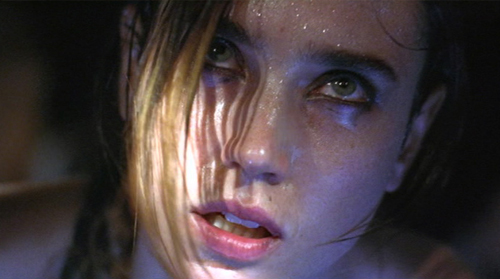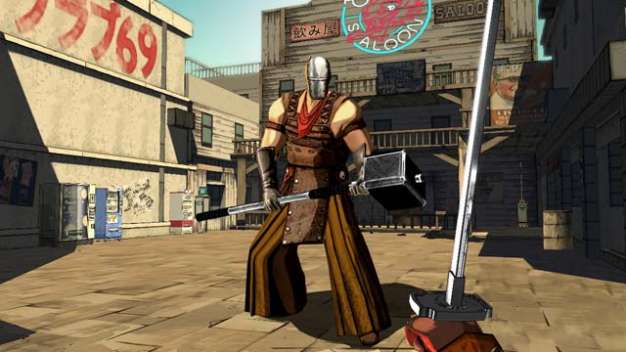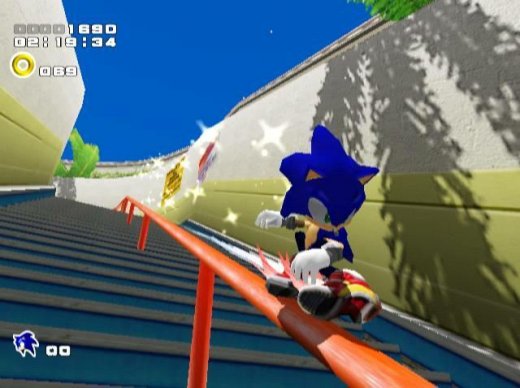
There's nothing a high-brow culture connoisseur likes more than viewing art and talking about how it's meaningful. Whether it's delving into the symbolism that a work possesses or debating with other fellows of similar stature on how poignant the hidden message is, the connoisseur simply enjoys discussing about impacting pieces of art. Now sometimes these people can be looking too much into whatever they wish to deem as art. Sometimes it may be beautiful, contain absolutely stunning imagery but it could mean nothing more than the artist has a creative imagination. Other times, these connoisseurs end up reading between the lines of pure drivel. Here's the thing, while there are works out there that have terrible (or terribly conveyed) messages behind them, that doesn't necessarily mean that they have no meaning within them. What I want to get into is how can one see if something truly contains an underlying purpose behind it, serves to be nothing more than an attempt to be edgy or simply has nothing more to show other than the product itself.
Let's assume that our work of art is a film, for the sake of argument. The first thing that signifies that there is meaning within a work is if the scenario contains depth. Stories that have their hero and villain set in stone hardly have anything more to them other than a basic action/adventure romp. The characters that matter in the story must have layers to them. They must have complexity to them, whether it comes mostly from their past, their relationships with other characters or their own personality by themselves. By having this, there is evidence that the characters in the story are not only realistic, but they are also bound to change. Without change, there is no greater conflict that can be pursued, and without conflict, there is nothing that can lead to moments where characters have to make their own choices.
Even with complex characters, for a story to push forth greater meaning, there must be events that are specific to the story that lead for the character to come up with a choice. When characters are placed into a position where they must decide on their next course of action, that eventually leads to a reaction. That result in turn creates turning points in the story, and when a story shifts in different directions, it keeps the mind going. If that is occurring, then the work is off to a good start on building itself as a trenchant masterpiece. Keep in mind though, there are a lot of creations out there that aren't as intricate that continue to get the attention of others. I mean, there are a lot of movies, books, etc. out there that have a wide array of three-dimensional characters yet they only serve to create a intriguing tale rather than push forth a challenge in the viewer's life. Something more must be done to show that it is not just an engaging series of events or a vapid, empty pile of drivel.
Enter juxtaposition, one of the most remarkable tools out there for anyone who wants to make art that is thought-provoking. It isn't necessary to include this into a work for it to possess meaning. It just helps out a lot. See, juxtaposition uses the idea of contrast to exemplify an idea. The way it works is similar to a chemical reaction. You place two compounds together, sit back and watch what occurs. Both of them will start to work off one another and spark all sorts of interesting imagery. It keeps on going for a while, building up with all sorts of sounds and sights until it starts to cool off. What's left is the product of what the two have managed to birth from the reaction. This product is precisely the intent of why these two differing compounds were put together. To me, an example would help a lot to further explain my point.
While I am not a fan of "Natural Born Killers", the I Love Mallory scene is a perfect example of juxtaposition at it's finest. Take note of the background, it resembles a standard 70-80s sitcom (despite having a name that resembles more of a 50s sitcom). There's a studio audience, canned laughter, bright music, and a somewhat goofy approach in the delivery of dialogue. It's supposedly a delightfully chirpy scene by what you are being presented with. Consider what is actually being conversed though. What stems out of this conversation is tension within the family, profanity, physical abuse and incestuous sexual abuse. One can not help but think that enveloping such dark tones in an almost-saccharine environment must signify a commentary towards society. It's difficult to say unless we have more information.
A good way to assure that what you are gazing upon aims to stimulate your thought-process is if it gives away indication that said idea is possible. As I have stated above, juxtaposition is a wonderful way to push forth this, but it doesn't have to be the only way. Symbolism is also key to this, as it hints to what really is going on beneath the surface. It shows that the choices that were made aren't just there coincidentally or to throw in a reference to something the creator enjoys, but rather a lead-in to a greater subtext. The thing about certain forms of symbolism though is for it to become engrained in your mind, it must be repeated for a while. As we all have learned from watching shows such as Sesame Street and Blue's Clues, if you repeat something enough, a person will eventually have an idea stuck in their mind. That in turn is what hooks the viewer to want to figure out more about the work itself. The problem with that is that it could become too obvious for the public to understand what the work is talking about. If it becomes too obvious, it falls into the risk of becoming a failed ploy to disguise pseudo-intellectualism as actual intellectualism (or at the very least being seen as such). Clearly that's not a fate that a purposeful piece wants to succumb to. What should be done then?
Rather than make the symbolism for the whole world to see, there are artists out there who specialize in making the greater symbolism cryptic. The idea behind this is that if you throw a few indications that there's more to what is happening, your audience will want to look deeper into the work itself. It stimulates their own mind and continues to get them considering the possibilities. One way that this is done is by using subtext. Again, let's use the example of films to better explain what I mean. Professional actors have to work into understanding their character in and out and have to know how they'd react with whatever crosses their path. At the same time, they must abide to what the script says because that's what the director seeks. Sure, they can occasionally throw in an improvisation or two, but unless the director is okay with it, it won't make it on the final print. So if they want to convey a certain feeling while following the script, they implement subtext. They try giving different inflections and tones in their voice, they see where they can pause for effect, and/or they use certain gestures as they say the line. If done right, the viewer can understand something more about the situation.
What you have to be wary of is how these hints are handled. If it's too subtle, it could be unlikely that whatever you pull out from it is of any real substance by whoever created the work of art. Basically, it comes off as if you're grasping at straws. If it's too blatant, chances are that it wasn't really there to get you pondering about an issue but rather finding a way to be relevant to the masses. When that becomes the case, it could end up as more of a joke rather than something that should be taken seriously. There needs to be a balance of both the blatant and the subtle for the message to not only be conveyed well, but also be seen as something of substance. Sure, the message in question may not be the best one, but if the creator can at least handle it with a certain sense of finesse, it could end up alright. And while it's obvious that there can't be too little of these hints, there can't be too many of them either, even if all of them are subtle.
For a person to comprehend a situation that is presented to them, they must have a bit of time to let it sink in. They may have to react fast, they may have to carefully calculate their next move, it doesn't matter. A work of art must allow for the person to look within themselves and see all the possibilities that they can. When something impacts them, they must be able to feel it and take in what has been dealt to them. It must get them wondering if they should change their perspective on a matter rather than just be aware of it. Even if it doesn't fully cause the audience to make them turn around on their principles, it must still do something that makes them understand where your message is coming from. If you find yourself in that spot, whether you're in the midst of experiencing the artwork or afterwards, that proves that whatever you saw has meaning.
At the end of the
day, with all of this said and done, what makes the art possess meaning
is that it treats it's audience with dignity. Dignity is what separates
George Orwell from Ayn Rand and Francis Ford Coppola from Harmony
Korine. It does not degrade you to a status of a plebeian and insult you
for not following with it's elitist agenda. Rather it shows you another
side of a matter. Sometimes that other side can be a harsh truth or a
terrifying plausibility much like how Big Brother functions in "1984".
Other times it shows that not everything is black and white. In reality,
there are various shades of grey in our world. Mobsters don't always
commit crimes simply because that's what they do. It does not just serve
as propaganda, because while there are certain kinds of propaganda that
are marvelous, it doesn't let whoever is watching feel as though they
have something that they could offer to the table. Art is supposed to
feel as if you're in the midst of a debate rather than being shouted in
the ear on why their message is right. Meaningful art also does not use unsettling imagery as the only means to get its point across.
One can still have surreal and disturbing imagery in art and still give
it meaning. Darren Aronofsky's "Requiem For A Dream" and Hunter S.
Thompson's "Fear And Loathing In Las Vegas" are among some of those
works that use them well because the images are there to emphasize a
point rather than be there for the sake of being there. One can say that
masturbating a tree branch could mean something, but if there is no
cohesion of the imagery with the narrative or the narrative is
non-existent, then it has no meaning at all.
Truth be told,
finding if the art itself has meaning is a difficult task. Even with all
the guidelines I have given you, some of the most intriguing magnum
opuses out there could easily just be an expression of creativity
rather than a biting social satire or a critical look at the human
condition. At some points, we find ourselves so enamored with a creation
that we witness that we find some sort of meaning within it, whether it
possesses it or not. That's not necessarily a bad thing, it shows that
the art has done enough to engage you. A work doesn't need to have a
great deal of sophistication to it to do that. Having meaning in art
doesn't necessarily result in the art being enjoyable because the
meaning could be nothing more than hatred or ignorance. Meaning only
aids a creation if it pushes the mind forward rather than setting it
back. When it does that, that's when the art becomes much more that just
a poignant masterpiece. What it becomes is a statement that triggers a
revolution. It could be small and slow, it could be grand and fast, it
could change a part of the world or all of it, it doesn't matter. What
matters is that when we come across a work that can do this, we will
change for the better.
































